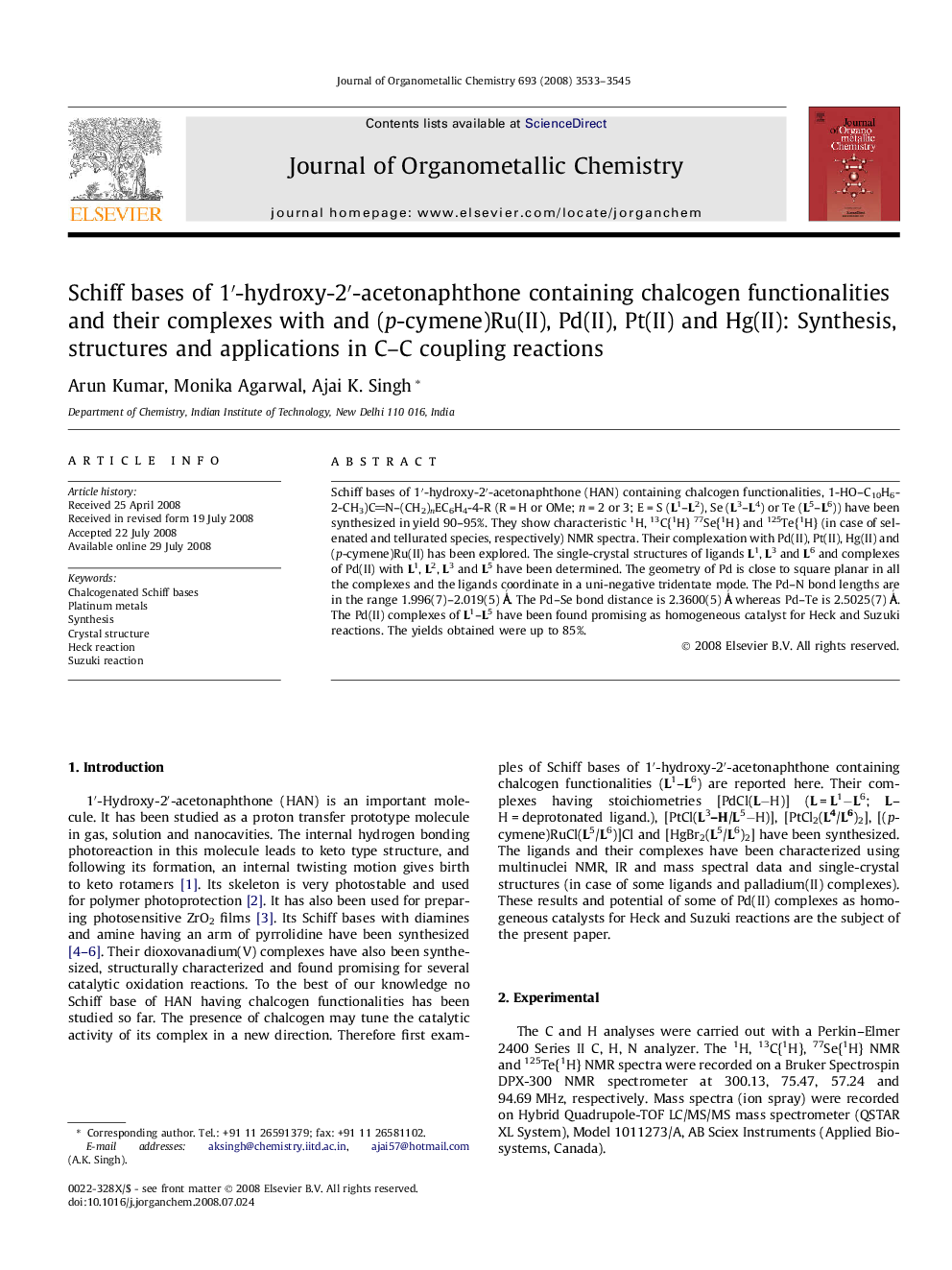| Article ID | Journal | Published Year | Pages | File Type |
|---|---|---|---|---|
| 1326932 | Journal of Organometallic Chemistry | 2008 | 13 Pages |
Schiff bases of 1′-hydroxy-2′-acetonaphthone (HAN) containing chalcogen functionalities, 1-HO–C10H6-2-CH3)CN–(CH2)nEC6H4-4-R (R = H or OMe; n = 2 or 3; E = S (L1–L2), Se (L3–L4) or Te (L5–L6)) have been synthesized in yield 90–95%. They show characteristic 1H, 13C{1H} 77Se{1H} and 125Te{1H} (in case of selenated and tellurated species, respectively) NMR spectra. Their complexation with Pd(II), Pt(II), Hg(II) and (p-cymene)Ru(II) has been explored. The single-crystal structures of ligands L1, L3 and L6 and complexes of Pd(II) with L1, L2, L3 and L5 have been determined. The geometry of Pd is close to square planar in all the complexes and the ligands coordinate in a uni-negative tridentate mode. The Pd–N bond lengths are in the range 1.996(7)–2.019(5) Ǻ. The Pd–Se bond distance is 2.3600(5) Ǻ whereas Pd–Te is 2.5025(7) Ǻ. The Pd(II) complexes of L1–L5 have been found promising as homogeneous catalyst for Heck and Suzuki reactions. The yields obtained were up to 85%.
Graphical abstractSchiff bases 1-HO–C10H6-2-CH3)CN–(CH2)nEC6H4-4-R (R = H or OMe; n = 2 or 3; E = S (L1–L2), Se (L3–L4) or Te (L5–L6)) and their complexes with Pd(II), Pt(II), Hg(II) and Ru(II) have been synthesized. The single-crystal structures of ligands L1, L3 and L6 and complexes of Pd(II) with L1, L2, L3 and L5 have been determined. The ligands coordinate in a uni-negative tridentate mode with Pd(II). The bond length are Pd–N 1.996(7) to 2.019(5) Ǻ; Pd–Se 2.3600(5) Ǻ; Pd–Te 2.5025(7) Ǻ. The Pd(II) complexes have been used for Heck and Suzuki reactions (Yields ∼85%).Figure optionsDownload full-size imageDownload as PowerPoint slide
